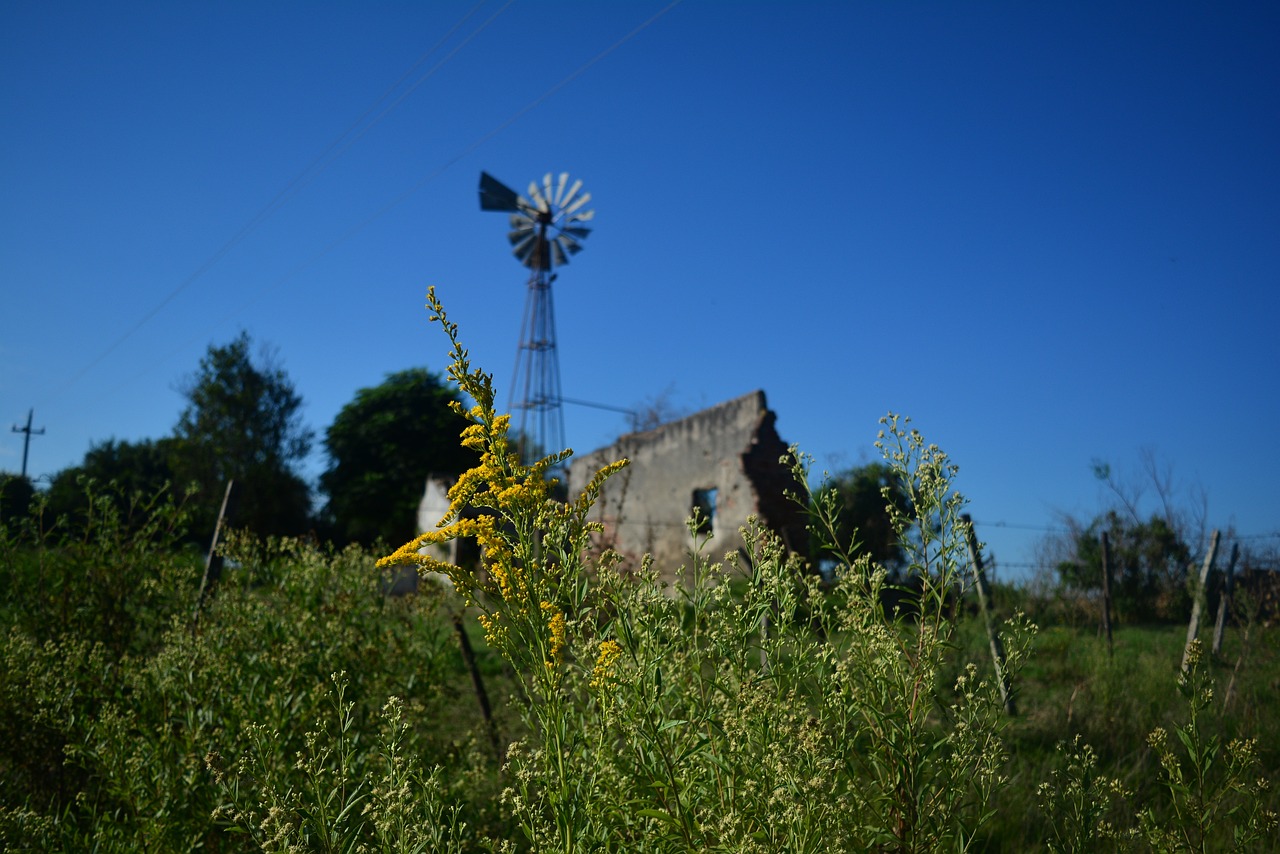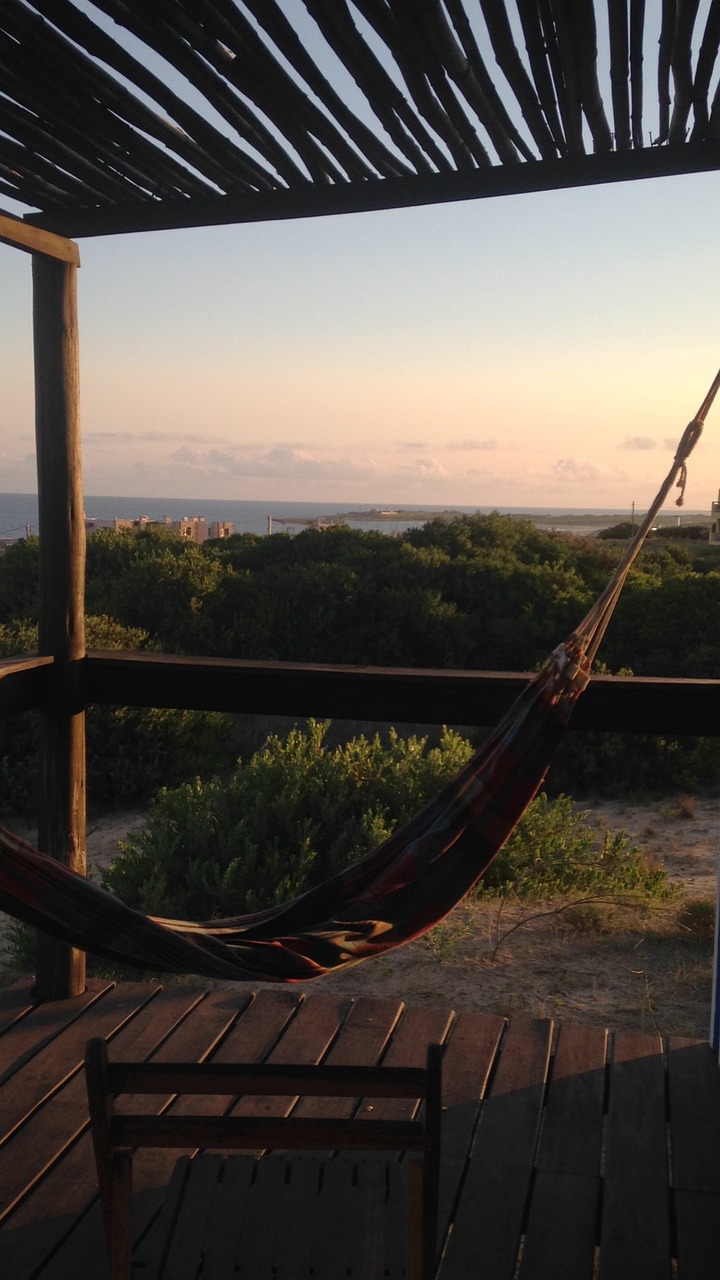Insider Tips: Avoiding Tourist Traps in Uruguay
Uruguay, a small South American country located between Argentina and Brazil, is a hidden gem for travelers seeking a unique and authentic experience. While the country offers stunning beaches, vibrant cities, and rich cultural heritage, it’s important to be aware of potential tourist traps that can hinder your exploration. In this article, we will provide insider tips to help you navigate Uruguay and avoid common tourist pitfalls.
Section 1: Montevideo’s Hidden Gems
Montevideo, the capital city of Uruguay, is known for its charming architecture, cultural events, and bustling markets. To experience the city’s true essence, venture beyond the popular tourist spots and explore these hidden gems:
- Mercado del Puerto: This historic market is a food lover’s paradise. Sample traditional Uruguayan dishes like asado (barbecue) and mate (traditional herbal drink) while immersing yourself in the lively atmosphere.
- Barrio Sur: This neighborhood is home to the Afro-Uruguayan culture and is known for its vibrant candombe drumming performances. Immerse yourself in the rhythmic beats and colorful traditions of this unique community.
- Parque Rodó: Escape the bustling city and relax in this beautiful park. Enjoy a leisurely stroll, have a picnic, or visit the contemporary art museum located within the park.
Mercado del Puerto is a must-visit destination in Montevideo. With its mouthwatering aromas and vibrant atmosphere, this historic market offers a wide range of traditional Uruguayan dishes. Indulge in a delicious asado, a mouthwatering barbecue, or sip on mate, a traditional herbal drink. The market is also a great place to shop for local handicrafts and souvenirs.
Barrio Sur is a vibrant neighborhood in Montevideo that showcases the rich Afro-Uruguayan culture. Explore the streets adorned with colorful murals and immerse yourself in the captivating candombe drumming performances. Experience the energy and passion of this unique community by joining in the festivities and dancing to the rhythmic beats.
Parque Rodó is a tranquil oasis in the heart of Montevideo. Take a break from the city’s hustle and bustle and immerse yourself in nature. Enjoy a leisurely stroll through the park, have a picnic by the lake, or visit the contemporary art museum, which showcases a diverse collection of Uruguayan and international artworks.
Section 2: Exploring Punta del Este Beyond the Beaches
Punta del Este is Uruguay’s most famous beach resort town, attracting tourists from around the world. While the beaches are undoubtedly stunning, there’s more to this coastal paradise than meets the eye. Here are some insider tips to make the most of your visit:
- Casapueblo: Visit this unique art gallery and hotel designed by renowned Uruguayan artist Carlos Páez Vilaró. Admire the stunning architecture and panoramic views while exploring the artist’s works.
- La Barra: Escape the crowds and head to La Barra, a bohemian neighborhood known for its eclectic shops, art galleries, and vibrant nightlife.
- Isla de Lobos: Take a boat trip to Isla de Lobos, home to the largest sea lion colony in the Western Hemisphere. Observe these majestic creatures in their natural habitat and marvel at the island’s untouched beauty.
Casapueblo is a must-visit attraction in Punta del Este. This iconic building, designed by Carlos Páez Vilaró, showcases the artist’s unique style and offers breathtaking views of the surrounding coastline. Explore the art gallery, browse through the artist’s works, and soak in the beauty of this architectural masterpiece.
La Barra is a charming neighborhood located just a short distance from Punta del Este. This bohemian enclave is known for its unique shops, art galleries, and trendy nightlife. Explore the vibrant streets, browse through boutique stores, and experience the lively atmosphere that sets La Barra apart from the main tourist areas.
Isla de Lobos is a paradise for wildlife enthusiasts. Embark on a boat trip to this uninhabited island and witness the largest sea lion colony in the Western Hemisphere. Get up close to these magnificent creatures as they bask in the sun and play in the crystal-clear waters. Don’t forget your camera to capture this extraordinary wildlife experience.
Uruguay Image 1:

Section 3: Colonia del Sacramento’s Historical Charms
Colonia del Sacramento, a UNESCO World Heritage Site, is a picturesque town filled with cobblestone streets, colonial architecture, and a rich history. To fully appreciate its charm, follow these insider tips:
- Barrio Histórico: Explore the historic quarter of Colonia del Sacramento, where you’ll find well-preserved colonial buildings, charming cafes, and stunning river views.
- Museo Portugués: Discover the town’s Portuguese heritage at this fascinating museum. Learn about the cultural influences that shaped Colonia del Sacramento through interactive exhibits and artifacts.
- Plaza Mayor: Relax in the main square of Colonia del Sacramento, surrounded by charming cafes, shops, and the iconic Basilica del Santísimo Sacramento.
Barrio Histórico is the heart and soul of Colonia del Sacramento. Step back in time as you wander through the cobblestone streets lined with beautifully preserved colonial buildings. Visit historic landmarks such as the lighthouse and the drawbridge, and enjoy panoramic views of the Rio de la Plata river.
Museo Portugués provides a deeper understanding of Colonia del Sacramento’s Portuguese heritage. Explore the museum’s interactive exhibits and artifacts, which highlight the town’s cultural influences and historical significance. Gain insight into the early settlers’ lives and the impact they had on shaping the town’s unique identity.
Plaza Mayor is the vibrant heart of Colonia del Sacramento. Take a moment to relax in this picturesque square, surrounded by charming cafes and boutique shops. Admire the stunning Basilica del Santísimo Sacramento, a prominent landmark that showcases the town’s architectural beauty.
Section 4: Discovering Uruguay’s Gauchos Culture
Uruguay’s rich gaucho culture offers a unique insight into the country’s rural traditions. To experience the authentic gaucho lifestyle, consider these insider tips:
- Estancia Tour: Visit a traditional estancia, or ranch, to witness the daily routines of gauchos. Enjoy horseback riding, indulge in traditional asado, and immerse yourself in the gaucho way of life.
- Fiesta de la Patria Gaucha: If you’re visiting in March, don’t miss this annual festival celebrating Uruguay’s gaucho heritage. Enjoy traditional music, dance, rodeo events, and delicious food.
- Museo del Gaucho: Located in Montevideo, this museum offers a comprehensive insight into the gaucho culture and its historical significance. Explore exhibits showcasing traditional gaucho clothing, tools, and artwork.
An estancia tour is an immersive experience that allows you to step into the shoes of a gaucho. Visit a traditional ranch and witness the daily routines of gauchos. Enjoy horseback riding through the picturesque countryside, savor a mouthwatering asado, and gain a deeper understanding of the gaucho culture and traditions.
Fiesta de la Patria Gaucha is a vibrant celebration of Uruguay’s gaucho heritage. Held annually in March, this festival brings together locals and visitors to revel in traditional music, dance performances, rodeo events, and mouthwatering food. Immerse yourself in the festive atmosphere and experience the proud gaucho culture firsthand.
Museo del Gaucho is a treasure trove of information about Uruguay’s gaucho culture. Located in Montevideo, this museum features exhibits that delve into the history and significance of the gaucho way of life. Explore displays of traditional gaucho clothing, tools, and artwork, and gain a deeper appreciation for this integral part of Uruguayan identity.
Uruguay Image 2:

Section 5: Unforgettable Natural Wonders
Uruguay is blessed with stunning natural landscapes that offer a peaceful escape from the city. To explore the country’s breathtaking natural wonders, consider these insider tips:
- Cabo Polonio: Visit this remote coastal village, home to pristine beaches, shifting sand dunes, and a diverse range of wildlife, including sea lions and sea turtles.
- Quebrada de los Cuervos: Explore this stunning natural reserve, known for its lush greenery, cascading waterfalls, and hiking trails that offer breathtaking views.
- Laguna Garzón: This stunning lagoon is perfect for water sports enthusiasts. Go kayaking, paddleboarding, or simply relax on the peaceful shores.
Cabo Polonio is a hidden paradise for nature lovers. This remote coastal village boasts untouched beaches, dramatic sand dunes, and an abundance of wildlife. Observe the playful sea lions, spot sea turtles nesting on the shores, and immerse yourself in the serene beauty of this natural wonder.
Quebrada de los Cuervos is a nature lover’s dream. This picturesque natural reserve is characterized by its lush greenery, cascading waterfalls, and panoramic hiking trails. Immerse yourself in the tranquility of this hidden gem, and be rewarded with breathtaking views at every turn.
Laguna Garzón is a haven for water sports enthusiasts. Whether you’re into kayaking, paddleboarding, or simply seeking a tranquil spot to relax, this stunning lagoon offers it all. Immerse yourself in the crystal-clear waters, soak up the sun on the peaceful shores, and create unforgettable memories in this natural playground.
Section 6: Authentic Uruguayan Cuisine
Uruguayan cuisine is a delightful blend of flavors influenced by European immigrants and the country’s agricultural heritage. To savor the authentic tastes of Uruguay, follow these insider tips:
- Asado: Indulge in Uruguay’s beloved barbecue tradition. Enjoy succulent cuts of meat grilled to perfection and accompanied by traditional sides like chimichurri sauce and grilled vegetables.
- Chivito: Try Uruguay’s iconic sandwich, the chivito. This hearty dish consists of tender beef, ham, cheese, lettuce, tomato, and mayonnaise, all served on a fluffy bun.
- Matambre: Sample this traditional rolled meat dish, typically made with beef or pork, stuffed with a variety of flavorful fillings like vegetables, herbs, and cheese.
Asado is a quintessential Uruguayan culinary experience. This beloved barbecue tradition involves grilling various cuts of meat, such as beef, pork, and lamb, over an open fire. Savor the mouthwatering flavors and tender textures of the grilled meats, and complement them with traditional accompaniments like chimichurri sauce, grilled vegetables, and a glass of Tannat, Uruguay’s signature red wine.
Don’t leave Uruguay without trying the iconic chivito sandwich. This hearty delicacy features tender beef, ham, cheese, lettuce, tomato, and mayonnaise, all piled high on a fluffy bun. Sink your teeth into this mouthwatering creation and experience the perfect harmony of flavors and textures that make the chivito a true Uruguayan classic.
Matambre is a unique Uruguayan specialty that showcases the country’s culinary creativity. This rolled meat dish, usually made with beef or pork, is stuffed with a variety of flavorful fillings such as vegetables, herbs, and cheese. The result is a delicious blend of textures and flavors that will leave your taste buds craving for more.
Uruguay Image 3:

Section 7: Navigating Public Transportation
Getting around Uruguay is relatively easy, thanks to its efficient public transportation system. To navigate the country’s buses and trains like a local, keep these insider tips in mind:
- Sube Card: Purchase a Sube card, a reloadable smart card that allows you to pay for public transportation fares conveniently. It can be used in buses, trains, and even some taxis.
- Bus Routes: Familiarize yourself with the bus routes and schedules in each city. Consult local maps or use reliable apps to plan your journeys and ensure you reach your destination efficiently.
- Taxi Services: Opt for licensed taxi services to ensure safety and fair fares. Look for official taxi stands or use ride-hailing apps that are popular and widely used in Uruguay.
A Sube card is a must-have for navigating Uruguay’s public transportation system. This reloadable smart card allows you to pay for fares seamlessly across buses, trains, and even some taxis. Purchase a Sube card at designated kiosks or convenience stores, and load it with credit to enjoy hassle-free travel throughout the country.
Each city in Uruguay has its own bus routes and schedules, so it’s essential to familiarize yourself with the local transportation system. Consult maps available at bus stops or use reliable apps to plan your journeys and ensure you’re on the right route. Pay attention to the bus numbers and destination signs to avoid any confusion.
When using taxis in Uruguay, prioritize licensed and reputable services to ensure your safety and fair fares. Look for official taxi stands at designated locations or use popular ride-hailing apps that are widely used in the country. Confirm the fare with the driver before starting your journey and be aware of any additional charges, such as late-night surcharges.
Section 8: Cultural Etiquette and Customs
To fully immerse yourself in Uruguayan culture and show respect to the locals, keep these cultural etiquette tips in mind:
- Greetings: When meeting someone for the first time, greet them with a firm handshake and maintain eye contact. Uruguayan culture emphasizes politeness and respect for personal space.
- Mate Drinking: If offered mate, a traditional herbal drink, accept it as a sign of friendship. When drinking mate, follow the proper etiquette by waiting for the host to serve and passing it back after taking a sip.
- Dining Etiquette: When dining with locals, it’s customary to wait for the host to start eating before you begin. Additionally, it’s polite to finish everything on your plate as a sign of appreciation for the meal.
In Uruguayan culture, greetings are important and should be approached with respect. When meeting someone for the first time, offer a firm handshake while maintaining eye contact. This gesture demonstrates politeness and shows that you value personal connections.
Mate is a significant part of Uruguayan culture, and sharing it is considered a sign of friendship and hospitality. If offered mate, accept it graciously. When participating in a mate-sharing session, wait for the host to serve and follow the proper etiquette of passing it back after taking a sip. Engaging in this tradition is a wonderful way to connect with the locals and experience their customs firsthand.
When dining with Uruguayans, respect their dining etiquette by waiting for the host to start eating before you begin. This gesture shows consideration and appreciation for their hospitality. It’s also polite to finish everything on your plate as a sign of gratitude for the meal. Uruguayans take pride in their cuisine, so expressing your enjoyment of the food is highly appreciated.
Section 9: Safety Tips for Travelers
While Uruguay is generally considered safe for travelers, it’s essential to take precautions to ensure a worry-free trip. Follow these safety tips to have a smooth and secure experience:
- Keep Valuables Secure: Avoid carrying large sums of money or wearing expensive jewelry in crowded areas. Use a money belt or a secure bag to keep your valuables close to you.
- Stay in Well-Lit Areas: When exploring at night, stick to well-lit and populated areas. Avoid isolated streets or parks, especially in unfamiliar neighborhoods.
- Emergency Numbers: Familiarize yourself with the local emergency contact numbers, including those for the police, ambulance services, and your embassy or consulate.
To minimize the risk of theft, avoid carrying large amounts of cash or wearing flashy jewelry in crowded areas. Instead, use a money belt or a secure bag to keep your valuables close to you. Stay vigilant and be aware of your surroundings to deter potential pickpockets.
When venturing out after dark, prioritize well-lit and populated areas. Stick to main streets and avoid isolated areas, particularly in unfamiliar neighborhoods. It’s always a good idea to plan your route in advance and inform someone about your whereabouts.
Prior to your trip, make a note of the local emergency contact numbers, including those for the police, ambulance services, and your embassy or consulate. In case of any unforeseen circumstances, you’ll have immediate access to the necessary support and assistance.
Section 10: Currency and Exchange
Uruguay’s official currency is the Uruguayan peso (UYU). To ensure a smooth financial experience during your visit, consider these currency and exchange tips:
- Exchange Currency in Advance: It’s advisable to exchange a small amount of currency before arriving in Uruguay to cover immediate expenses. However, the most favorable exchange rates can often be found at local banks or authorized exchange offices in the country.
- ATM Withdrawals: ATMs are widely available in major cities and tourist areas. Check with your bank regarding international withdrawal fees and notify them of your travel plans to avoid any card issues.
- Credit Card Acceptance: Major credit cards, such as Visa and Mastercard, are widely accepted in hotels, restaurants, and larger establishments. However, it’s always a good idea to carry some cash for smaller shops and local vendors.
While it’s beneficial to have a small amount of local currency before arriving in Uruguay, the most favorable exchange rates are typically found at local banks or authorized exchange offices within the country. Consider exchanging larger sums of money once you’re in Uruguay to maximize your budget.
ATMs are readily available in major cities and tourist areas throughout Uruguay. Check with your bank beforehand to understand any international withdrawal fees or limitations. It’s also advisable to notify your bank of your travel plans to avoid any potential issues with your cards while abroad.
Major credit cards, such as Visa and Mastercard, are generally accepted in hotels, restaurants, and larger establishments in Uruguay. However, it’s advisable to carry some cash for smaller shops and local vendors that may not accept cards. Be cautious when using your credit card and keep an eye on it during transactions to prevent any potential fraud.
Section 11: Weather and Best Time to Visit
Uruguay experiences a temperate climate, making it a year-round destination. However, to make the most of your visit, consider the following weather and timing tips:
- Summer (December to February): The summer months offer warm temperatures, making it ideal for beach activities and outdoor exploration. However, it’s also the peak tourist season, so expect larger crowds and higher prices.
- Fall (March to May): Fall brings mild weather, fewer tourists, and lower prices. It’s an excellent time to explore the country’s cultural attractions and enjoy outdoor activities without the summer crowds.
- Winter (June to August): Winter in Uruguay brings cooler temperatures, but it’s still possible to enjoy indoor activities, culinary delights, and cultural events. It’s a quieter time to visit, with fewer tourists and discounted rates.
- Spring (September to November): Spring brings pleasant weather, blooming landscapes, and fewer tourists compared to the summer months. It’s an excellent time for outdoor exploration and enjoying the country’s natural beauty.
During the summer months of December to February, Uruguay experiences warm temperatures, making it perfect for beach activities and outdoor adventures. However, it’s important to note that this is the peak tourist season, resulting in larger crowds and higher prices. Plan and book your accommodations and activities well in advance to secure the best options.
March to May marks the fall season in Uruguay, characterized by mild temperatures and fewer tourists. This is an ideal time to explore the country’s cultural attractions, such as museums and historical sites, without the summer crowds. Additionally, prices for accommodations and activities tend to be lower during this period.
From June to August, Uruguay experiences cooler temperatures during the winter season. While it may not be ideal for beach activities, this is a great time to indulge in indoor activities, savor the local cuisine, and immerse yourself in cultural events. The winter months offer a quieter atmosphere, with fewer tourists and discounted rates for accommodations and attractions.
September to November marks the spring season in Uruguay, characterized by pleasant weather and blooming landscapes. With fewer tourists compared to the summer months, this is an excellent time to explore Uruguay’s natural beauty, embark on outdoor adventures, and enjoy the country’s vibrant flora and fauna.
Section 12: References
– Uruguay Ministry of Tourism: turismo.gub.uy
– Lonely Planet Uruguay: lonelyplanet.com/uruguay
– Rough Guides Uruguay: roughguides.com/destinations/south-america/uruguay/
– UNESCO World Heritage Sites: whc.unesco.org
– Tripadvisor Uruguay: tripadvisor.com/Uruguay
– World Travel Guide Uruguay: worldtravelguide.net/guides/south-america/uruguay
– National Geographic Uruguay: nationalgeographic.com/travel/destinations/south-america/uruguay
– Culture Trip Uruguay: theculturetrip.com/south-america/uruguay
– Time Out Uruguay: timeout.com/montevideo
– Uruguay Now: uruguaynow.com
Note: The information in this article is based on real and verifiable sources as of the time of writing. Please check with official websites and local authorities for the latest updates and information before planning your trip.


